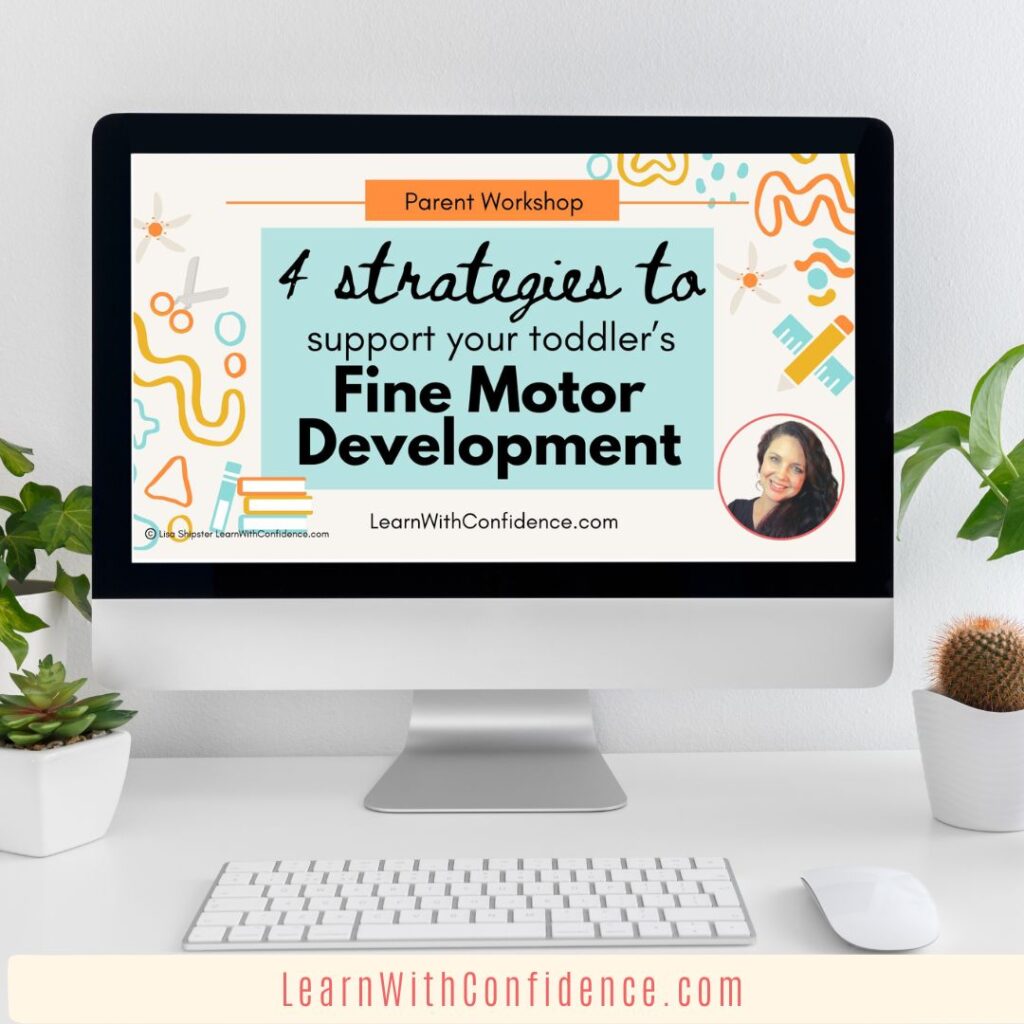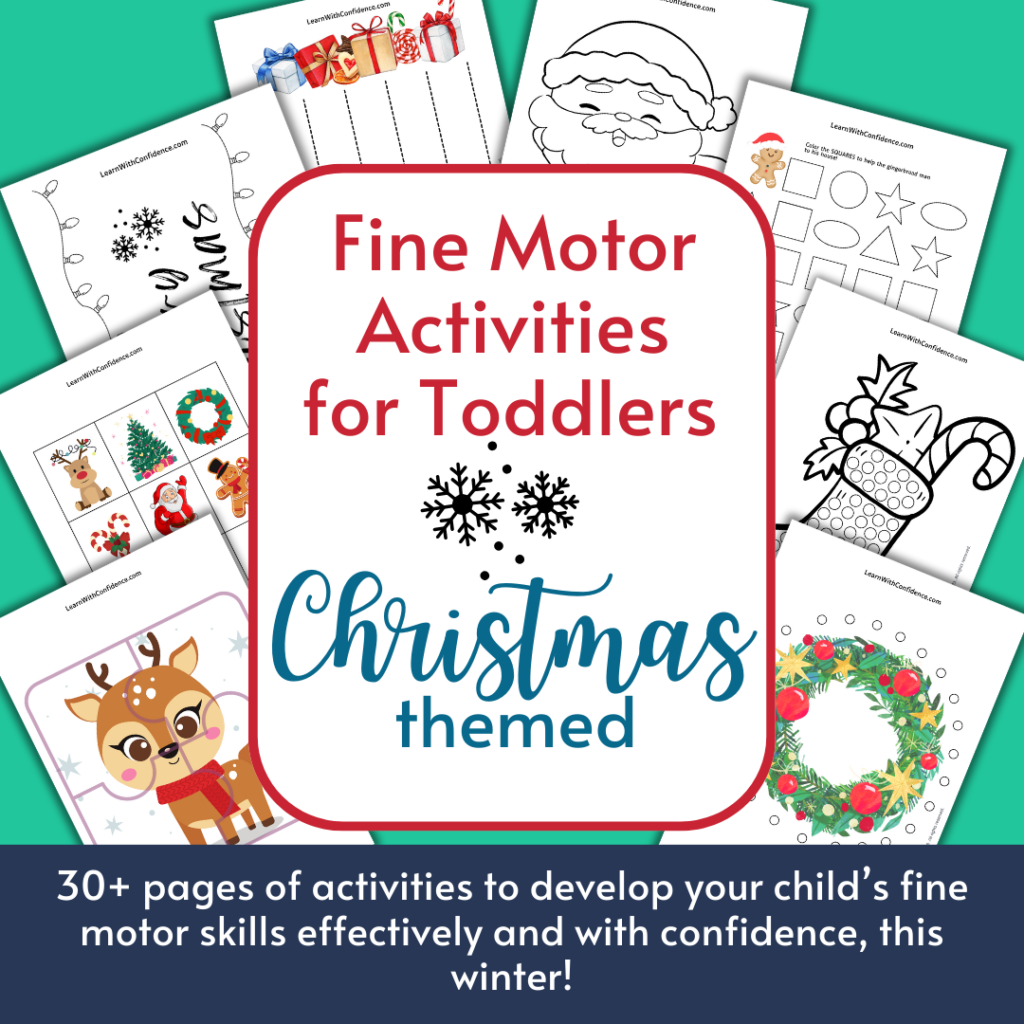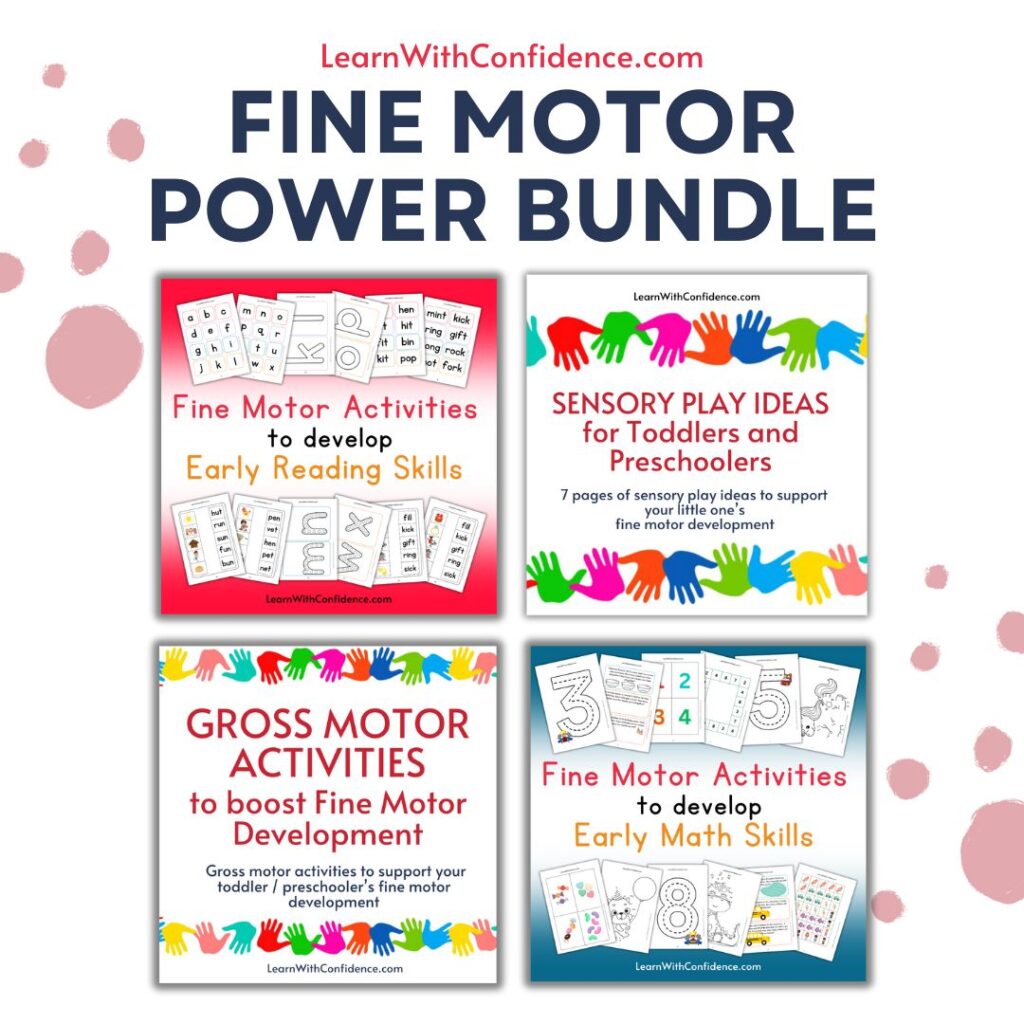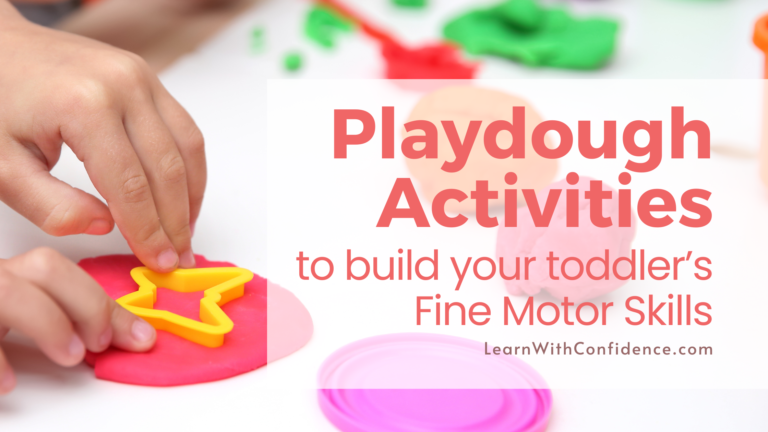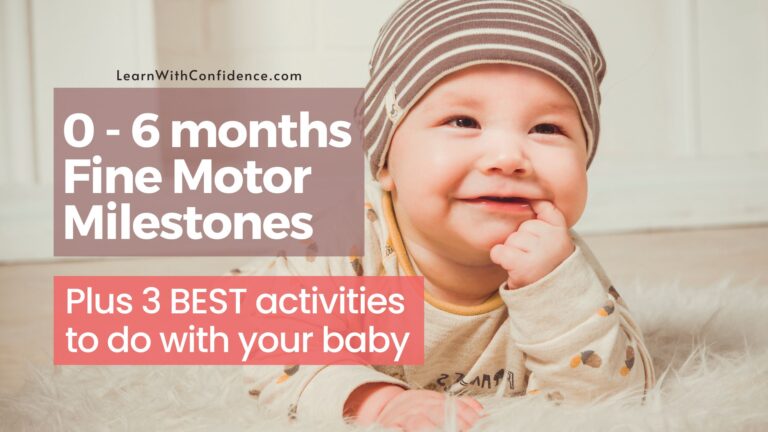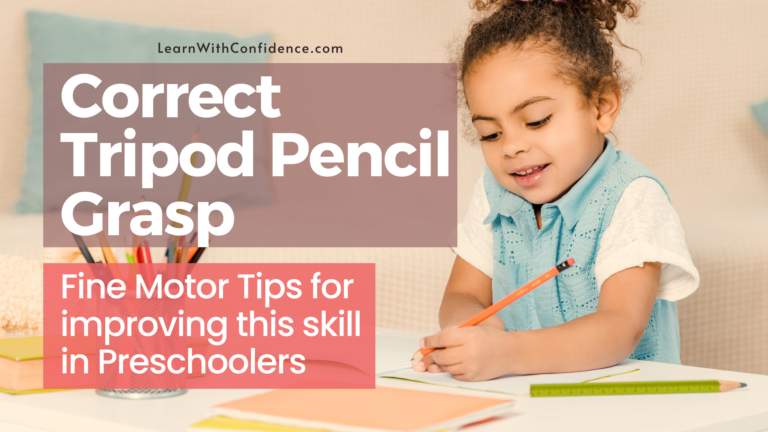Build Gross Motor Skills for Better Fine Motor Development
Ever thought about how many skills your toddler or preschooler is actually learning in these early years?
We often talk about fine motor skills here but something we need to understand is how crucial gross motor activities are in being a foundation for those fine motor skills.
These larger movements—such as running, jumping, and climbing—provide the structural foundation for the muscles used in fine motor activities and are essential for our children’s growth and learning.
In this post, we’ll dive into why gross motor skills are so important, how they support other areas of development, and what activities you can do with your toddler to help them build these crucial skills.
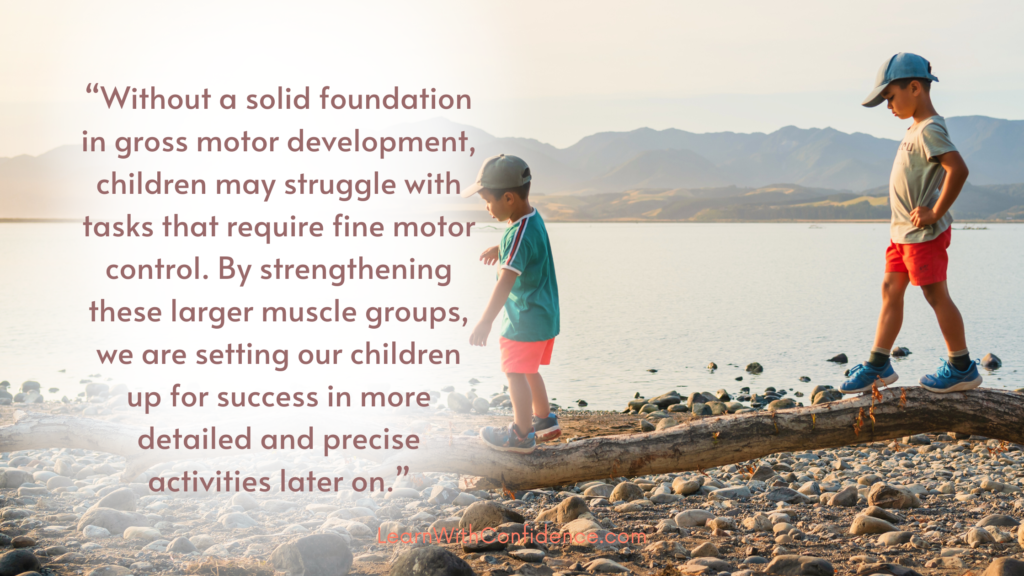
Why Gross Motor Skills Matter
Gross motor skills involve the large muscles of the body that allow for movement and coordination. Think of these skills as the building blocks upon which fine motor skills are developed.
For example, shoulder and wrist stability are necessary for your child to hold a pencil correctly when writing. Core strength and good posture enable your child to sit upright, focus on tasks, and engage in activities that require precision, like cutting with scissors.
Without a solid foundation in gross motor development, children may struggle with tasks that require fine motor control.
For instance, a child with poor posture and low muscle tone might find it challenging to hold their body upright in a chair, making it difficult to focus on holding a pencil correctly.
By strengthening these larger muscle groups, we are setting our children up for success in more detailed and precise activities later on.

Gross Motor Activities to Boost Your Child’s Development
Here are some excellent gross motor activities that build strength and stability that your child will use in many ways.
Bouncing on a Trampoline
Bouncing on a trampoline is one of the most effective and fun ways to build gross motor skills.
This activity doesn’t just strengthen your child’s core and improve their balance; it also helps them develop a sense of where their body is in space (proprioception) and enhances their vestibular system, which is crucial for balance and coordination.
Trampoline play also has the added benefit of helping children regulate their nervous system, making it an excellent tool for emotional regulation.
When your child feels overwhelmed, a few minutes of bouncing can help them burn off excess energy and return to a calmer state.
And let’s not forget—the sheer joy of bouncing up and down is a huge win in itself!
Bouncing, Throwing, or Kicking a Ball
Simple activities like bouncing, throwing, or kicking a ball are incredibly beneficial for your child’s gross motor development. These activities not only build physical strength and coordination but also help develop hand-eye coordination and spatial awareness.
When your child throws a ball into a hoop or kicks it toward a goal, they’re learning to perceive objects in relation to each other and adjust their movements accordingly.
This kind of play also enhances their ability to predict and plan their actions, which are important cognitive skills.
Balancing on Things
Balancing activities develop postural stability and core strength.
These skills are foundational for your child’s ability to hold their body upright and steady during fine motor tasks.
Proprioception—your child’s ability to sense where their body is in space—is a key component of balance. Children need to practice this skill by balancing and, yes, even by falling over.
By experiencing slight falls and learning to correct their balance, your child’s brain becomes more able to recognize when their body isn’t centered and making the necessary adjustments.
Simple balancing activities could include walking on a balance beam, standing on one leg, or even hopping from one foot to the other.
Hanging and Climbing
Climbing and hanging activities are fantastic for building gross motor skills. Whether it’s climbing trees, navigating jungle gyms, or mastering the monkey bars, these activities help your child develop their sense of body awareness and spatial judgment.
Climbing up a slide or hanging from a branch provides a unique challenge that strengthens muscles, improves coordination, and teaches problem-solving.
Additionally, these activities offer valuable opportunities for children to confront and manage big emotions like fear and anxiety.
For example, climbing to the top of a jungle gym might initially seem daunting, but with practice and encouragement, your child will learn to overcome their fears and build confidence in their abilities.
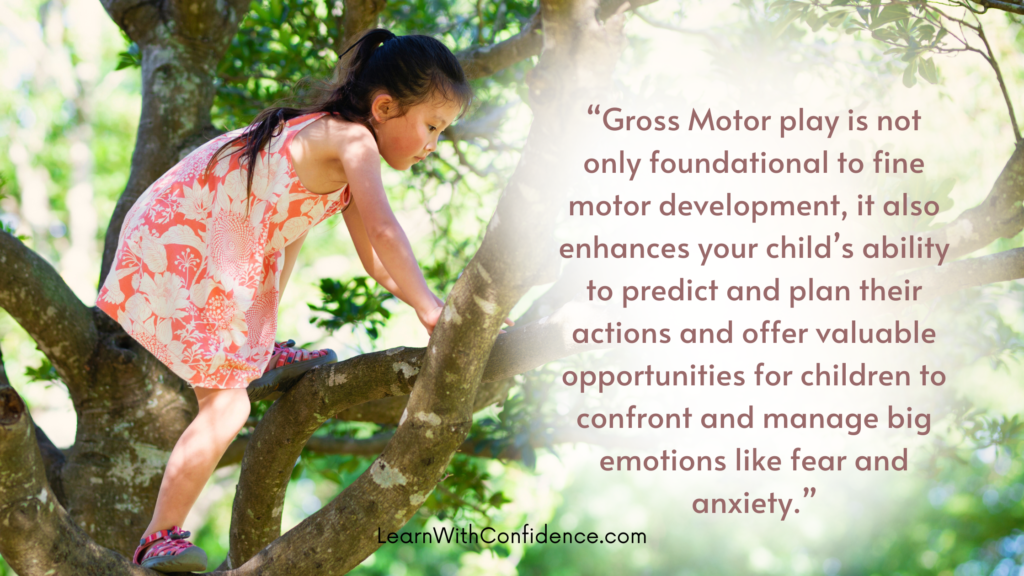
The Connection Between Gross and Fine Motor Skills
Gross motor activities don’t just strengthen the larger muscle groups; they also lay the groundwork for the fine motor skills that will be developed later on.
A child who has strong core muscles, good posture, and stable shoulders and wrists will find it easier to do fine motor tasks like writing, coloring, cutting, and other detailed tasks.
Moreover, while engaging in gross motor activities, children are also developing a range of early learning skills such as cognitive and social-emotional skills.
For instance, playing with a ball or climbing a jungle gym requires problem-solving, planning, and coordination—all of which contribute to cognitive development. Socially, these activities often involve taking turns, following rules, and cooperating with others, which are essential skills for emotional and social growth.
Make it a daily activity
By incorporating activities like bouncing, balancing, climbing, and ball play into your child’s daily routine, you’re not only helping them build physical strength and coordination but also setting the stage for successful fine motor development. As your child masters these gross motor skills, they’ll be better equipped to tackle more precise tasks, all while growing in confidence and emotional resilience.
So, the next time your child wants to climb a tree or bounce on a trampoline, remember that they’re doing more than just playing—they’re building the foundation for a lifetime of learning and development. Embrace these moments, encourage their exploration, and watch as they grow stronger, more capable, and more confident with each new challenge they conquer.
Ready to Learn More about Supporting your Child’s Fine Motor Development?
Here are some more awesome Fine Motor Resources I think you’ll love!
Connect with me
Have you got a new way to play with your child while you have fun developing their fine motor skills – drop a comment to let us know!
Feel free to reach out in the comments or send me an email to connect. It’s my mission to equip and empower you to help your child succeed – you are, after all, the best person for that job, because you are the expert on your child.

